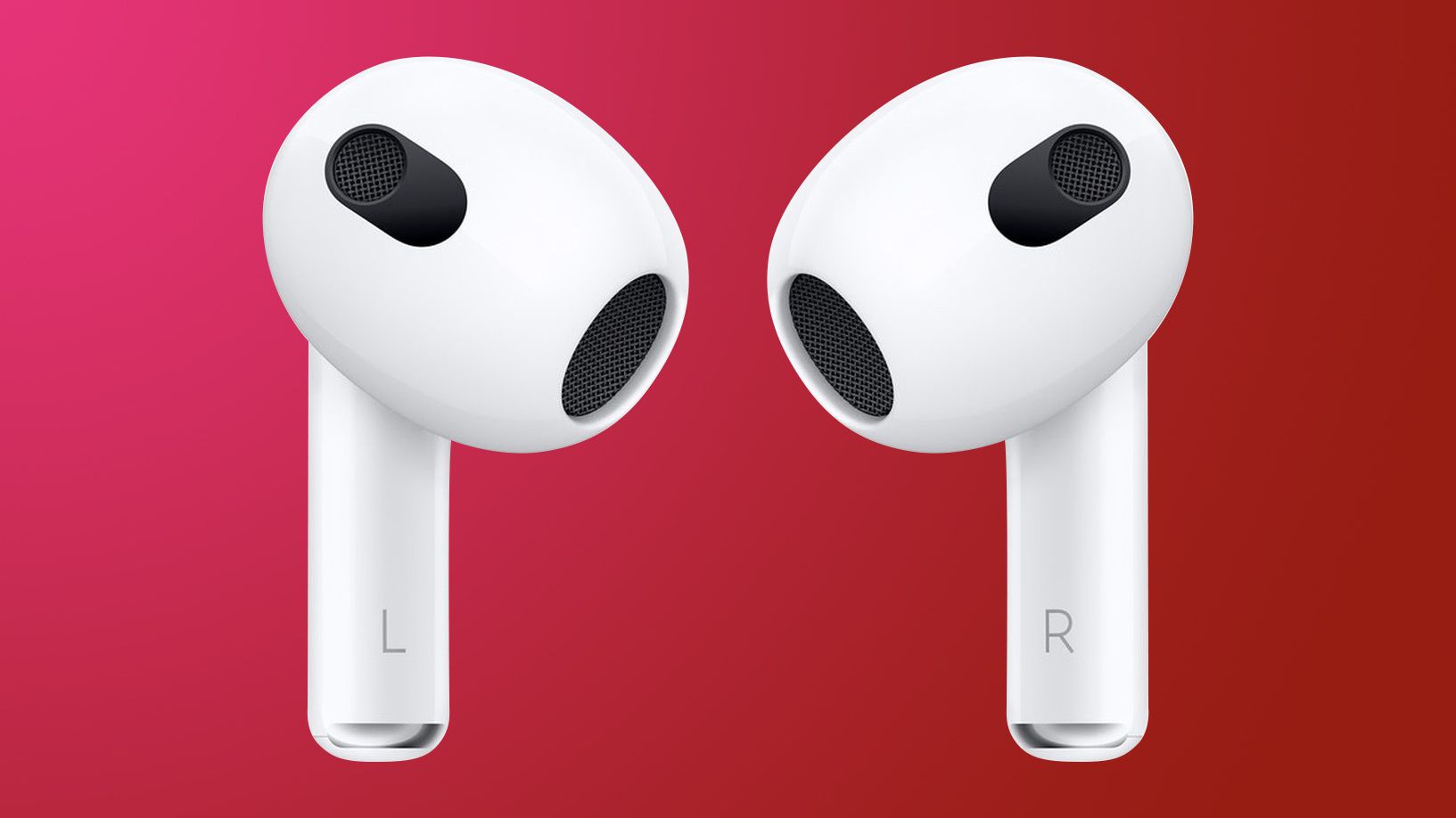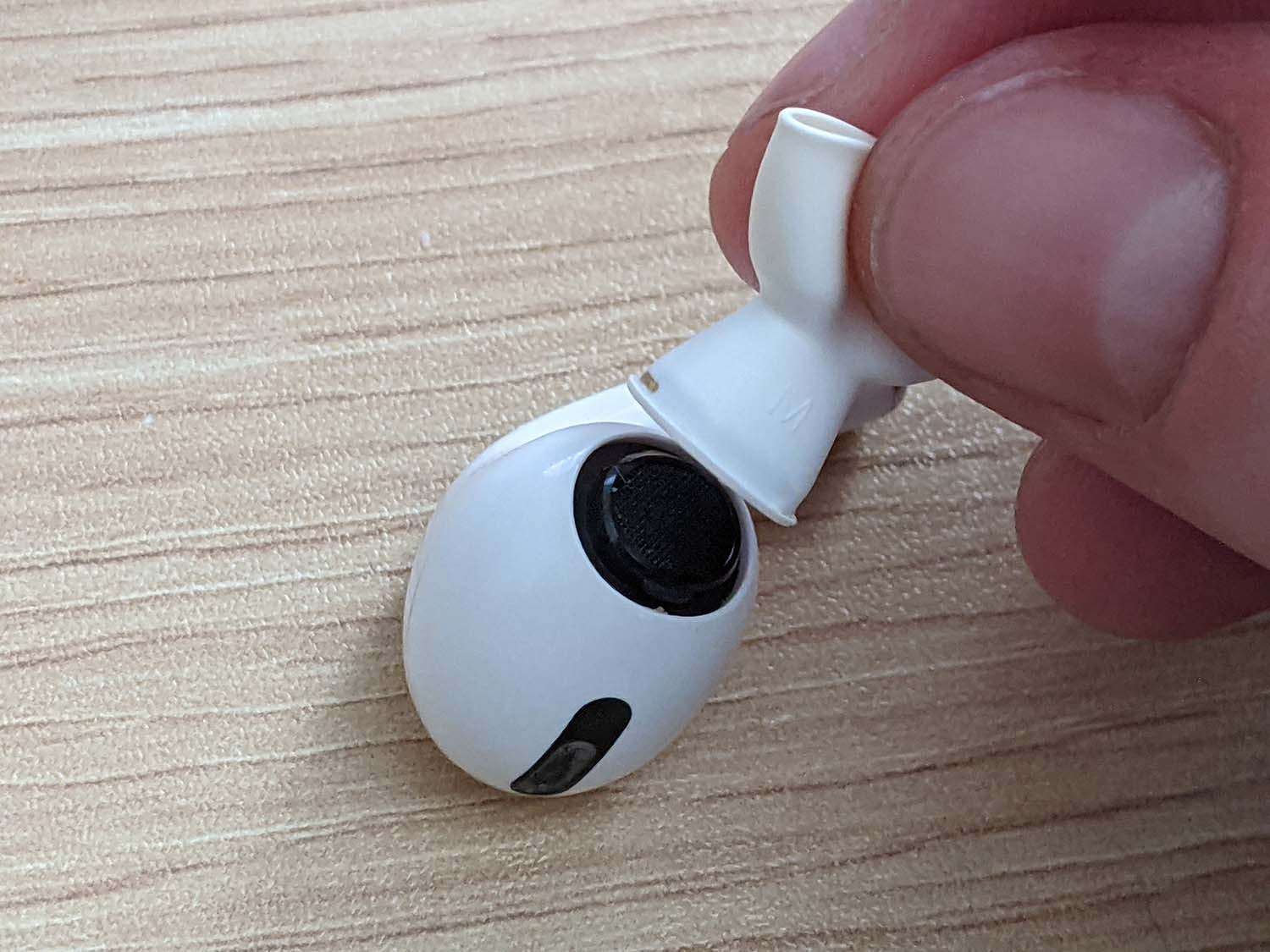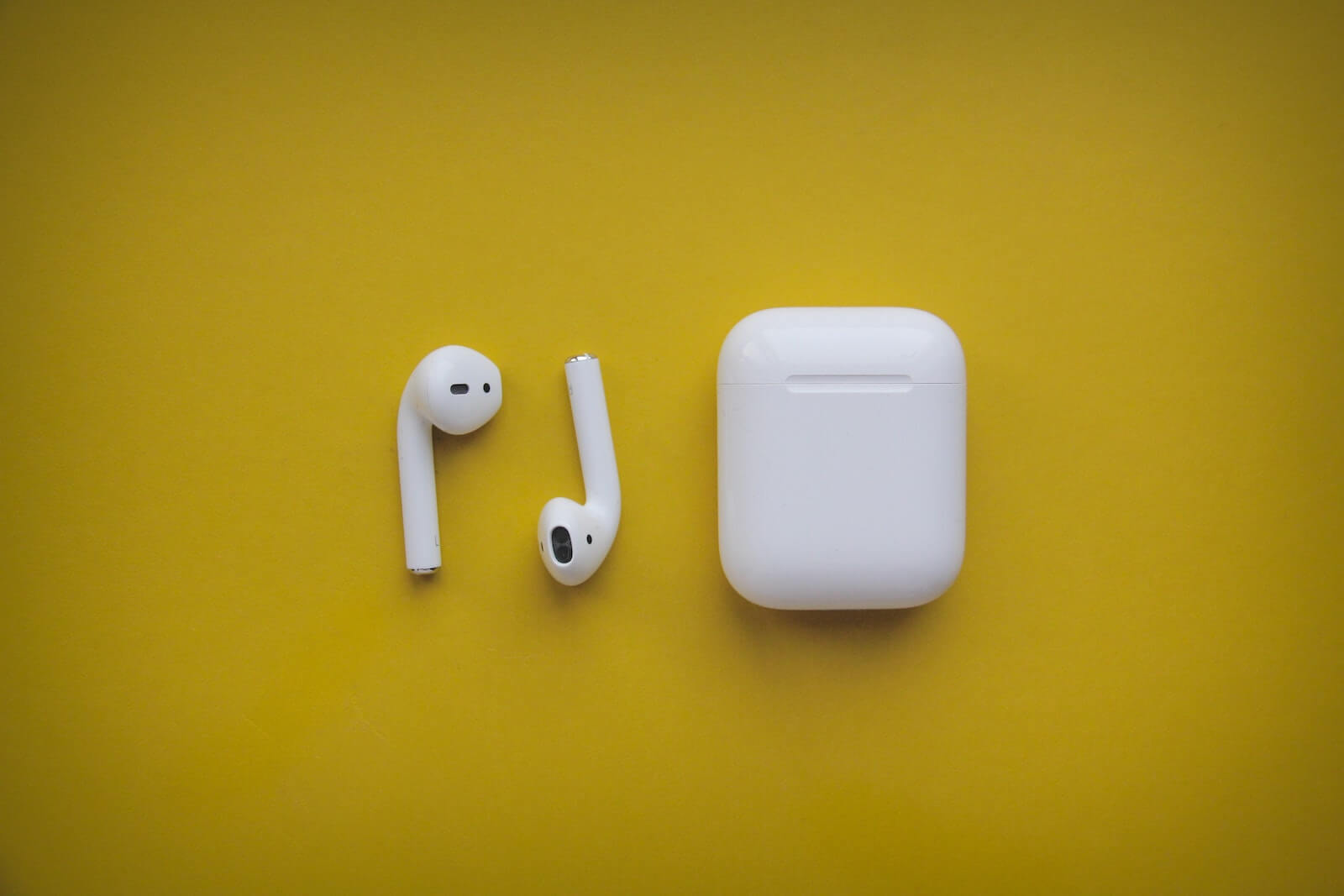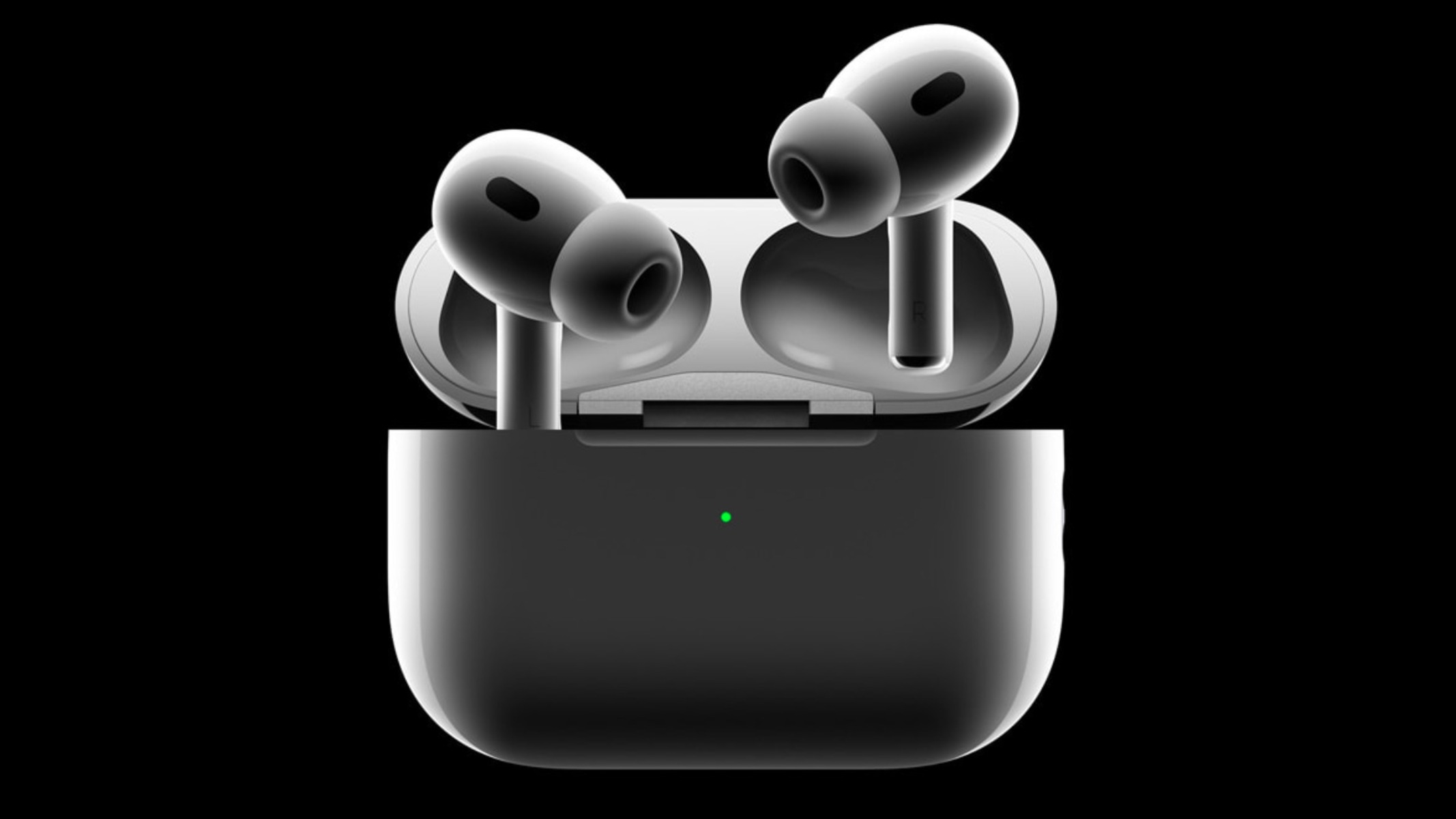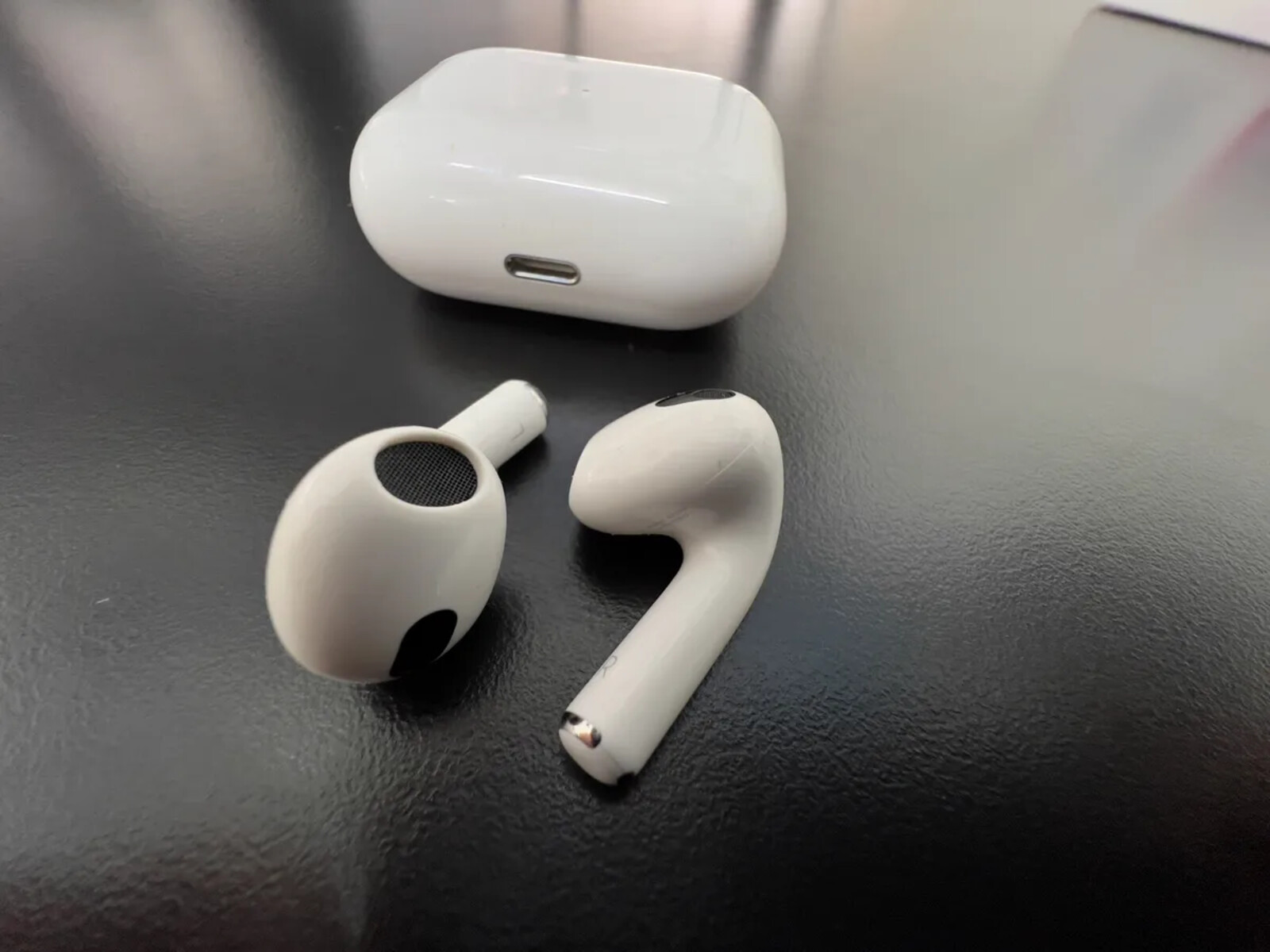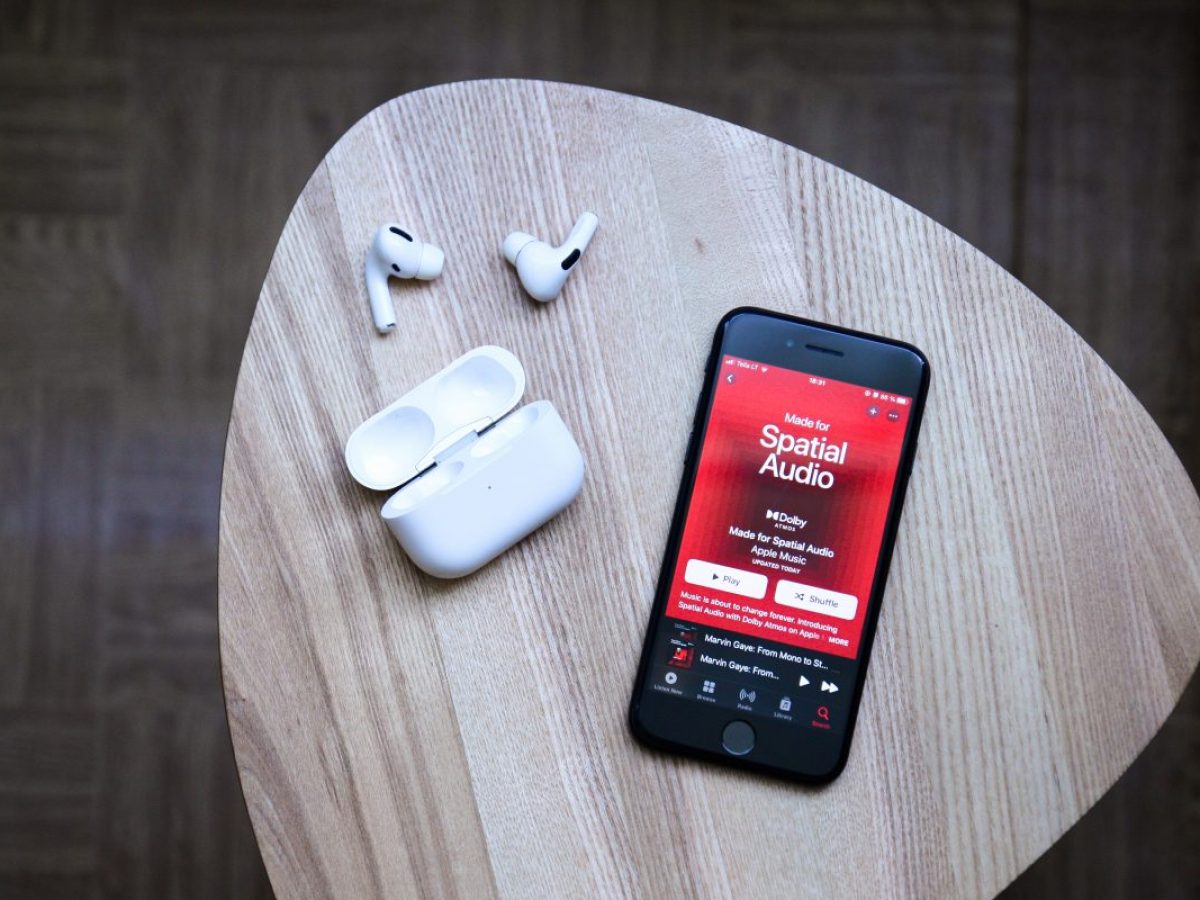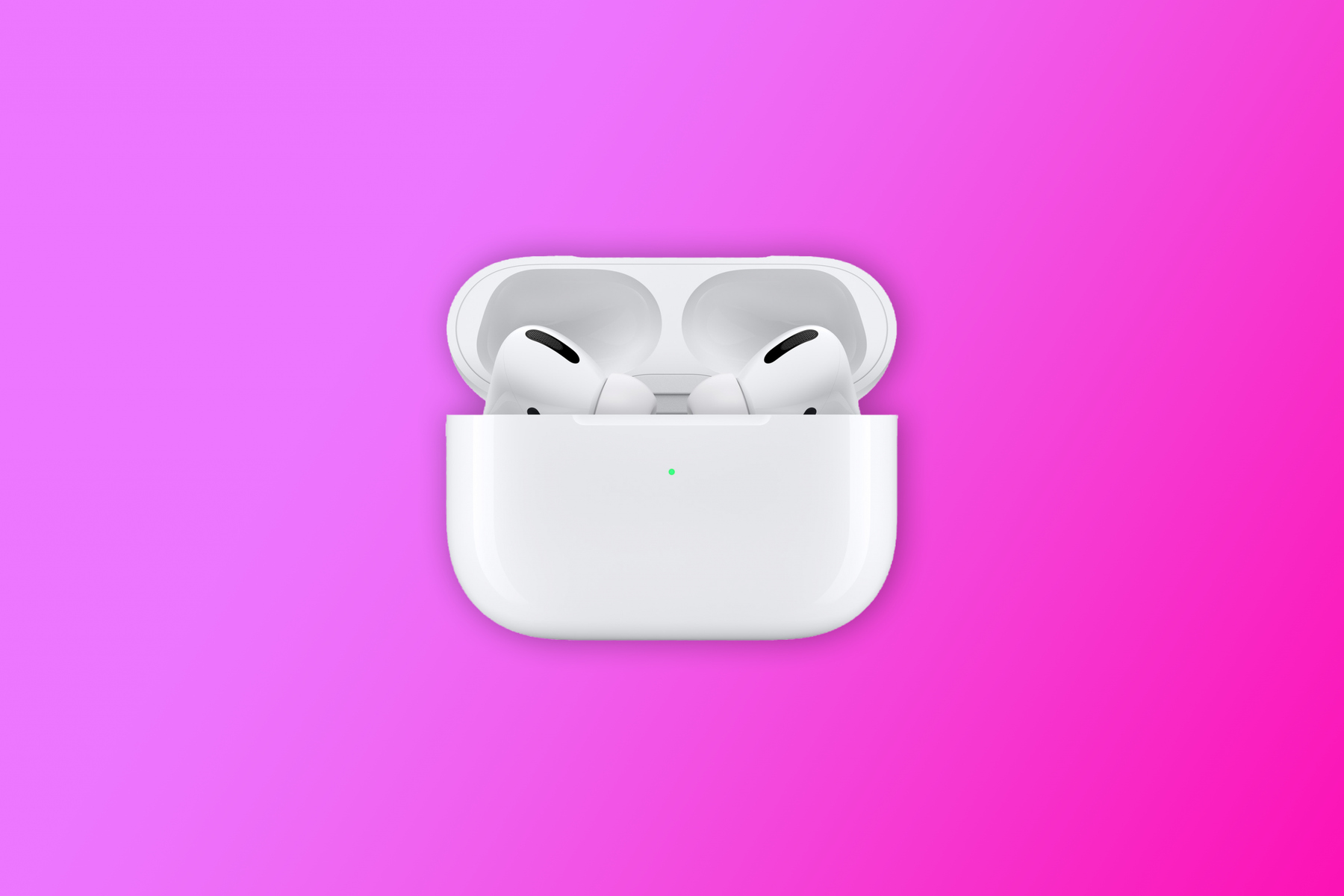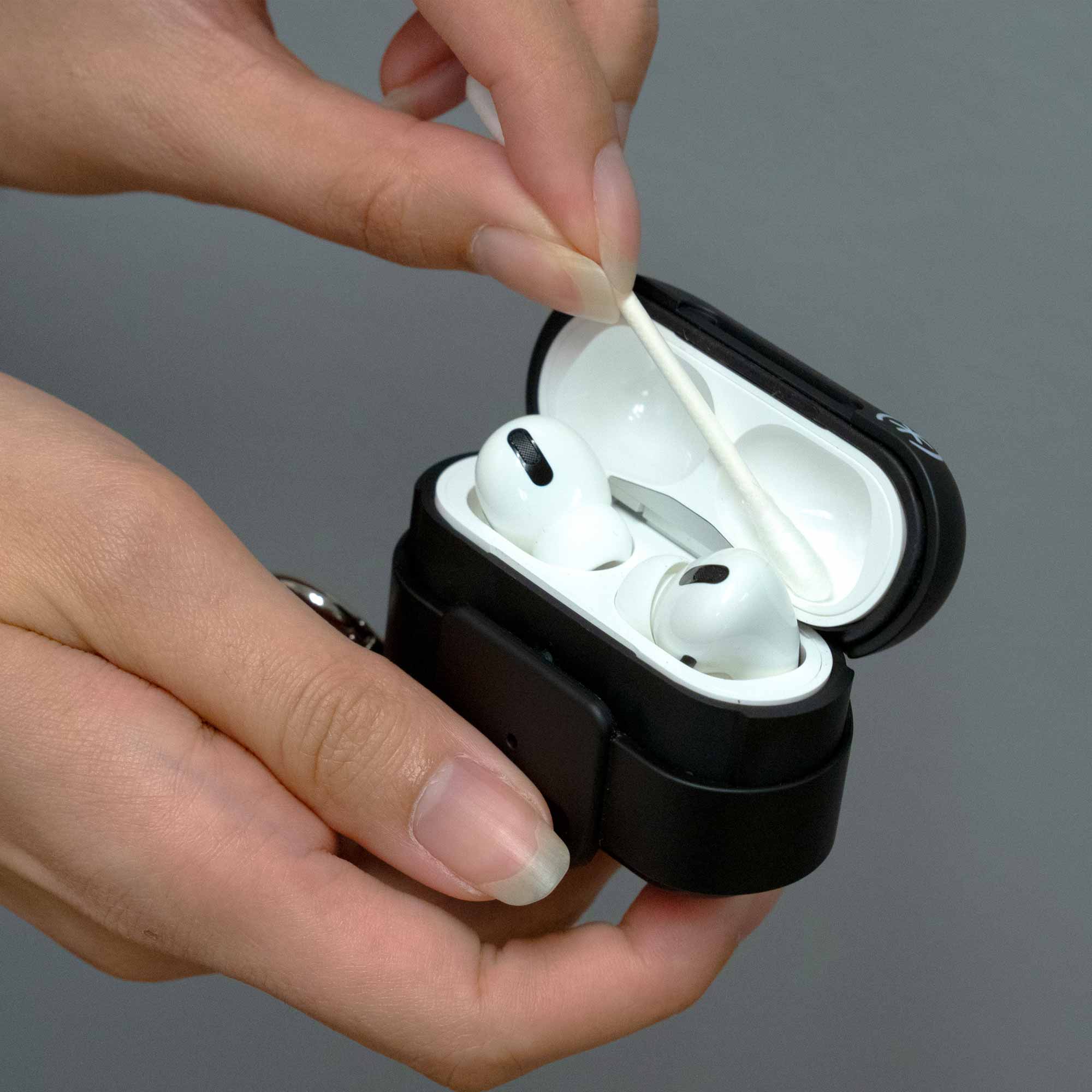Introduction
Welcome to the era of wireless audio, where convenience seamlessly meets technology. With the advent of AirPods, Apple revolutionized the way we listen to music and engage in hands-free communication. These sleek and portable earbuds have become a staple accessory for many, providing a cable-free and effortless listening experience.
However, for some users, the joy of owning AirPods comes at a price – discomfort. The ear canal is a delicate and sensitive part of the body, and finding the perfect fit for everyone can be a challenging task. It’s not uncommon to experience discomfort, pain, or even irritation after prolonged use of AirPods.
In this article, we will explore the reasons behind AirPods discomfort and discuss potential remedies to alleviate their side effects. Whether you’re a long-time AirPods user or contemplating purchasing a pair, understanding the causes and potential solutions for ear discomfort is crucial.
Before we dive into the various factors that contribute to AirPods discomfort, let’s take a closer look at the design of these wireless earbuds and how they interact with the unique shape of our ears.
Understanding the design of AirPods
Before delving into the discomfort experienced while wearing AirPods, it’s important to understand their design and how they differ from traditional wired earphones. AirPods are designed to be compact, lightweight, and wireless, which means they lack the bulky wires and connectors that can get tangled or restrict movement.
The unique design of AirPods consists of a small, rounded earpiece that fits into the ear canal, connected to a stem that extends down towards the jawline. This design aims to provide a secure and comfortable fit while ensuring clear audio transmission. However, the one-size-fits-all approach presents challenges as everyone has different ear shapes and sizes.
Unlike traditional earbuds that typically have silicone tips to seal the ear canal, AirPods rely on a semi-open design. This design choice allows for better ambient sound awareness but may result in a looser fit compared to in-ear headphones. The lack of a secure seal may impact audio quality and contribute to discomfort for some individuals.
Additionally, the stem of the AirPods houses various sensors and controls, such as proximity sensors that detect when the AirPods are inserted or removed from the ears, as well as touch-sensitive areas for controlling playback, volume adjustment, and invoking voice assistants.
Understanding the design of AirPods is essential as it helps us identify the specific factors that may lead to discomfort. Now that we’ve explored the overall design, let’s delve into the role of ear shape in the overall equation.
The role of ear shape in AirPods discomfort
When it comes to the comfort and fit of AirPods, the shape of our ears plays a significant role. Our ears come in various shapes and sizes, and the universal design of AirPods may not cater to everyone’s unique ear anatomy.
One common issue related to ear shape is the size and contour of the ear canal. Some individuals may have narrower or wider ear canals, which can impact the fit of the AirPods. If the ear canal is too small, the AirPods may sit loosely and cause discomfort. On the other hand, if the ear canal is larger, the AirPods may not form a snug fit and may easily fall out.
Ear shape also affects the placement and orientation of the AirPods within the ear. For example, individuals with ears that protrude or stick out may find that the AirPods’ stem doesn’t align properly with the jawline, resulting in a less secure fit and potential discomfort.
Additionally, the shape of the external part of the ear, known as the pinna, can also impact the comfort of AirPods. The pinna varies in size and shape among individuals, and certain ear shapes may cause the AirPods to press against sensitive areas, leading to discomfort or pain.
It’s important to note that while the universal design of AirPods may not perfectly fit everyone, Apple has made efforts to address this issue. They have conducted extensive research on ear anatomy and have developed the AirPods Pro, which features customizable silicone ear tips designed to provide a more tailored and secure fit. These ear tips come in different sizes and allow users to find the most comfortable option for their specific ear shape.
Despite these advancements, some individuals may still experience discomfort due to the inherent limitations of a one-size-fits-all device. In the next section, we will explore some common causes of AirPods discomfort that are not solely dependent on ear shape.
Common causes of AirPods discomfort
AirPods discomfort can stem from various factors beyond just the shape of our ears. Understanding these common causes can help identify potential solutions and alleviate discomfort.
One common cause of AirPods discomfort is prolonged pressure on specific areas of the ears. The compact and lightweight design of AirPods can make us forget that we are wearing them for extended periods. The pressure exerted by the earbuds, especially when tightly inserted, can lead to soreness, pain, and even headaches.
Another contributing factor is the material used in the construction of AirPods. While they are made with lightweight materials, such as plastic and metal, some individuals may have specific sensitivities or allergies to these materials. This can result in irritation, itchiness, or even allergic reactions when wearing AirPods.
The quality of sound and volume levels can also impact comfort. Listening to music or audio at high volumes for long periods can cause ear fatigue and discomfort. It is important to find a comfortable listening level and take breaks to give your ears a rest.
In addition, while the semi-open design of AirPods allows for better ambient sound awareness, it can also allow external noise to seep in. As a result, some users may feel the need to increase the volume to compensate. This can lead to discomfort and potential damage to the ears.
Lastly, excessive moisture and sweat can contribute to discomfort when wearing AirPods. The tight fit of the earbuds can trap moisture in the ear canal, creating a breeding ground for bacteria and leading to itchiness, ear infections, or general discomfort.
Understanding these common causes of AirPods discomfort is crucial in finding ways to alleviate it. In the next section, we will discuss the impact of wearing AirPods for an extended period and how to minimize discomfort associated with prolonged use.
The impact of wearing AirPods for an extended period
As convenient as AirPods may be, wearing them for an extended period can have certain impacts on our ears and overall comfort. It’s important to be mindful of these potential effects to avoid any long-term discomfort or damage.
One common issue that arises from wearing AirPods for prolonged periods is ear fatigue. The constant pressure and contact with the ear canal can cause a sensation of heaviness or tiredness in the ears. This can lead to discomfort and the need for a break from wearing the AirPods.
In addition, wearing AirPods for long durations may increase the risk of developing earwax buildup. Earwax is a natural substance that helps protect the ear canal from dust, dirt, and bacteria. However, the presence of AirPods may prevent the natural expulsion of earwax, potentially leading to accumulation and blockage. This can result in discomfort and decreased audio quality.
Furthermore, extended use of AirPods can impact our ability to hear and communicate with others without wearing them. Consistently exposing our ears to the audio produced by AirPods can temporarily desensitize them to lower volume levels. This can make it more challenging to engage in conversations or hear ambient sounds without relying on the AirPods.
Lastly, the prolonged use of AirPods may contribute to a phenomenon known as “listener’s fatigue.” This occurs when our ears are exposed to continuous audio for an extended period. The constant stimulation can lead to a decrease in the perceived quality of sound and cause fatigue, discomfort, or even headaches.
To minimize the impact of wearing AirPods for a prolonged period, it is essential to take regular breaks and practice proper ear hygiene. By giving your ears regular intervals of rest from wearing AirPods, you can allow them to recover and reduce the risk of ear fatigue.
In the next section, we will explore various techniques and tips for alleviating AirPods discomfort and ensuring a more comfortable wearing experience.
How to alleviate AirPods discomfort
If you experience discomfort while wearing AirPods, there are several steps you can take to alleviate the issue and improve your overall comfort.
1. Adjusting your AirPods for a better fit: Start by ensuring that your AirPods are properly seated in your ears. Gently twist and adjust the angle to find the most comfortable position. Experiment with different adjustments until you achieve a snug fit without exerting excessive pressure on your ears.
2. Using alternative ear tips and accessories: If you have AirPods Pro, take advantage of the customizable silicone ear tips. Choose the size that fits your ears best and ensures a secure and comfortable fit. Alternatively, you can explore third-party accessories such as memory foam tips or ear hooks to enhance the fit and alleviate discomfort.
3. Taking breaks and practicing proper ear hygiene: Avoid prolonged, continuous use of AirPods. Give your ears regular breaks to rest and recover. Additionally, practice good ear hygiene by cleaning your AirPods regularly and ensuring that your ears are clean and dry before wearing them.
4. Lowering the volume and minimizing external noise: Listening to audio at a moderate volume can help reduce ear fatigue and discomfort. Additionally, minimizing external noise by using noise-canceling features or ambient sound modes can enhance your listening experience and prevent the need to increase the volume excessively.
5. Using EQ settings: Adjusting the equalizer settings on your device can help optimize the audio and reduce any discomfort caused by imbalanced sound frequencies. Experiment with different settings to find the configuration that suits your ears the best.
6. Considering alternative audio options: If AirPods continue to cause discomfort despite trying various solutions, consider exploring alternative wireless earbuds or headphones that offer a different design or fit. Everyone’s ears are unique, and finding the right audio device for your specific needs is essential.
By implementing these strategies, you can significantly alleviate AirPods discomfort and enhance your overall wearing experience. Remember to listen to your body and adjust accordingly to ensure long-term comfort and satisfaction with your wireless audio device.
Adjusting your AirPods for a better fit
One of the first steps to alleviate discomfort while wearing AirPods is to adjust them for a better fit. Here are some tips to help you achieve a more comfortable and secure fit.
- Twist and rotate: Start by gently twisting and rotating your AirPods within your ears. This can help find the optimal angle and position that feels the most comfortable. Experiment with different positions to see which works best for you.
- Insertion depth: Ensure that the AirPods are inserted deep enough into your ear canal. The semi-open design of AirPods may tempt you to keep them shallow, but inserting them properly can provide a more secure fit and reduce discomfort.
- Equalize pressure: If you experience discomfort due to pressure buildup, try equalizing the pressure by gently pulling up on the top part of your ear while inserting the AirPods. This can help release any trapped air and provide relief.
- Experiment with ear orientation: Different ear shapes may require adjusting the orientation of AirPods for a better fit. Some individuals find that slightly tilting the AirPods forward or backward provides a more comfortable fit. Experiment with these small adjustments to find what works best for you.
- Consult the user guide: Apple provides a user guide for AirPods that can offer specific instructions on how to adjust and position the earbuds for optimal comfort. Take the time to read the guide and follow any recommendations provided.
Remember, everyone’s ears are unique, and what works for one person may not work for another. It may take some trial and error to find the perfect fit. Take the time to adjust and test different configurations until you find a position that is both comfortable and secure.
Once you have adjusted your AirPods for a better fit, you should notice a significant improvement in overall comfort. However, if you still experience discomfort, it may be worth exploring alternative ear tips or accessories that can enhance the fit and reduce any potential discomfort you may be experiencing.
Using alternative ear tips and accessories
If adjusting your AirPods for a better fit doesn’t alleviate discomfort, you may want to consider using alternative ear tips and accessories. Here are some options to explore:
- Third-party silicone tips: For AirPods Pro users, third-party manufacturers offer a wide range of silicone ear tips that provide a customizable, snug fit. These tips come in different sizes and materials, allowing you to find the perfect fit for your ears.
- Memory foam tips: Memory foam tips are an excellent alternative for those seeking additional comfort and better noise isolation. These foam tips conform to the shape of your ear canal, providing a secure and comfortable fit while reducing external noise.
- Ear hooks or wings: If your AirPods tend to fall out or feel unstable, consider using ear hooks or wings. These accessories attach to the AirPods and wrap around the back of your ear to provide extra support and ensure a secure fit.
- Ear cushions: Some companies offer aftermarket ear cushions that can be attached to the AirPods’ stem. These cushions provide additional padding and can help distribute pressure more evenly, reducing discomfort caused by extended use.
- Earcuffs: Earcuffs are small clips or loops that attach to the AirPods and rest against the outer part of your ear. They can help alleviate discomfort by repositioning the AirPods and reducing pressure on sensitive areas.
When considering alternative ear tips or accessories, it’s essential to ensure compatibility and quality. Look for reputable manufacturers and read customer reviews to ensure that the products are well-made and fit securely with your AirPods.
Experiment with different options to find the combination that works best for your comfort. Remember to follow the instructions provided by the manufacturer when installing or attaching any accessories to your AirPods.
Using alternative ear tips or accessories can significantly improve the comfort and fit of your AirPods, allowing you to enjoy your wireless audio experience without discomfort or pain.
Taking breaks and practicing proper ear hygiene
When it comes to alleviating AirPods discomfort, taking breaks and practicing proper ear hygiene are essential. Here are some guidelines to follow:
- Take regular breaks: Giving your ears regular breaks from wearing AirPods can help prevent fatigue and discomfort. Take short intervals to remove your AirPods and allow your ears to rest and recover. This can be especially beneficial during long listening sessions or extended phone calls.
- Limit continuous usage: Avoid wearing your AirPods for hours on end without taking any breaks. Extended periods of continuous use can lead to ear fatigue, discomfort, and increased risk of earwax buildup or other related issues.
- Clean your AirPods and ears: Keeping your AirPods clean is crucial for maintaining hygiene and preventing potential discomfort. Regularly clean the earbuds using a soft, lint-free cloth or a mild cleaning solution recommended by the manufacturer. Additionally, ensure your ears are clean and dry before wearing the AirPods to minimize the risk of irritation or infection.
- Avoid sharing your AirPods: Sharing your AirPods can introduce foreign germs and bacteria to your ears, increasing the risk of discomfort or infection. It’s best to use your AirPods personally and avoid sharing them with others.
- Manage earwax buildup: Excessive earwax can contribute to discomfort and affect the fit and audio quality of your AirPods. Use a mild earwax removal solution or consult a healthcare professional to safely remove any excess wax in your ears to alleviate potential issues.
By incorporating these practices into your routine, you can minimize the risk of discomfort and maintain good ear health while using AirPods. Remember, taking care of your ears is just as important as enjoying your wireless audio experience.
Conclusion
AirPods have undoubtedly transformed the way we listen to music and interact with our devices, providing a seamless and wireless audio experience. However, discomfort while wearing AirPods is a common issue that many users encounter. Understanding the design of AirPods, the role of ear shape, and the common causes of discomfort can help us find ways to alleviate it.
Adjusting your AirPods for a better fit, using alternative ear tips and accessories, taking breaks, and practicing proper ear hygiene are some effective strategies to minimize discomfort. By implementing these techniques, you can improve your overall comfort while enjoying the convenience of AirPods.
It’s important to remember that everyone’s ears are unique, and finding the perfect fit and level of comfort may require some experimentation and customization. Explore different options, such as third-party ear tips or accessories, to optimize your wearing experience.
Additionally, practicing good ear hygiene and giving your ears regular breaks are essential for maintaining ear health and preventing discomfort or potential issues arising from prolonged AirPods use.
Ultimately, your comfort and satisfaction should be the top priority. If despite trying various strategies, AirPods continue to cause significant discomfort, considering alternative audio options or consulting a professional may be necessary.
With these insights and recommendations in mind, you can enjoy your AirPods to the fullest while prioritizing your comfort and well-being. Happy listening!







